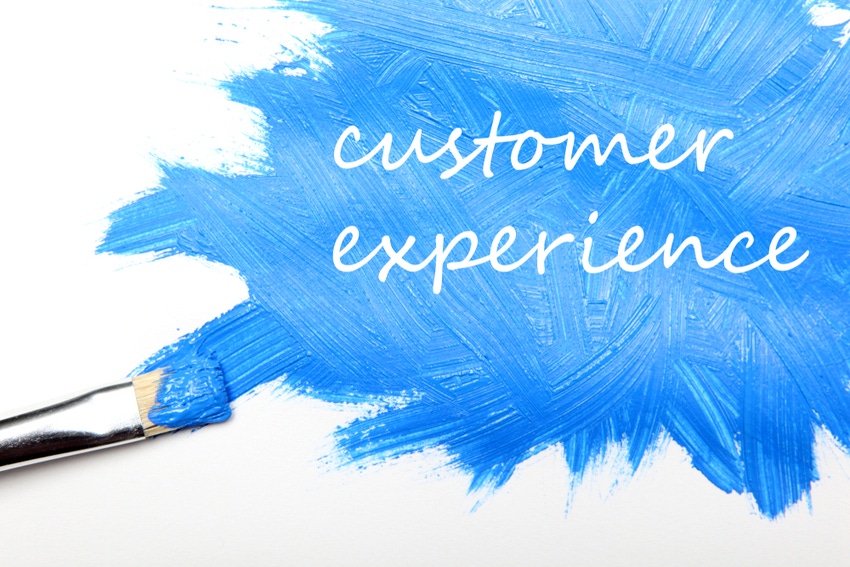Why is the "customer experience" so hot right now?
February 21, 2020

By Jeffrey Schwartz
Approximately nine of every 10 companies say they compete based on delivering a positive customer experience (CX), according to Gartner, yet note even one in five channel partners is equipped to handle that, according to a report issued last year by CompTIA.
Carolyn April, CompTIA’s senior director for industry analysis, will moderate a panel at next month’s Channel Partners Conference & Expo in Las Vegas to discuss why customer experience (CX) will increasingly become a high priority for channel firms to invest in. Joining April on the panel will be RingCentral marketing AVP John Finch, who sees contact center as a service (CCaaS) as an important component of CX; Amber Redmann, CEO of Parasol Alliance, a specialized technology solutions company focused on the senior living industry; and Tiffani Bova, global customer growth and innovation evangelist at Salesforce, and author of the book Growth IQ.

CompTIA’s Carolyn April
it’s part of the sales and marketing conference track, March 10. We sat down with the panelists for a preview of their session.
Channel Partners: According to your (CompTIA’s) survey, only 19% of channel providers have implemented the capability to address today’s CX requirements. Is that a surprising figure?
Carolyn April: It’s not surprising, mainly because most of the channel is comprised of small companies. And it means changing your approach, adding additional people that may specialize in areas that you didn’t really need to worry about before, like social media, which is costly. So, they have to weigh the cost-benefit analysis. I expect it’ll slowly tick up as people realize how important it is for them to invest in CX.
Tiffani Bova: This is a bit surprising, but I think it all depends on how channel providers define customer experience. First off, it isn’t a capability; it isn’t a product or a service. It is a mindset shift from being product-led to customer-led. Most of the channel is enamored by the products they sell, the certifications they hold, [and] the technology capabilities and partnerships they have which used to be the benchmark for determining which partner a company might choose to use. Now, it is about things like NPS and CSAT — solving customer issues from their vantage point. As the saying goes, if you sell hammers, everything looks like a nail.

Parasol Alliance’s Amber Redmann
Amber Redmann: While perhaps alarming, this figure is not surprising. With more market disruptions than ever before, companies are forced to explore innovative avenues to provide customer experience. Creating an outstanding product or service is no longer good enough for today’s modern consumer. The stakes are higher. Customers have a need to feel good about the product or service they receive. They seek to feel appreciated, valued and trust the company they work with or buy from. The customer experience landscape is more competitive now than ever before. Companies that do not adapt and grow with new demands will undoubtedly feel the effects.
CP: What will lead to that inflexion point?
CA: More and more customers are willing to go on record and start saying that it is …
… the No. 1 factor to engaging with them versus price. That’s when you’re going to see these small guys really get into the CX game.

RingCentral’s John Finch
John Finch: Actually, delivering on omnichannel. It’s a digital-first world now; voice is just a channel. The systems in place today will not support multiple customer touch points or interactions, which will make this difficult to address without a SaaS platform. Being able to handle interactions across channels like social, messaging, in-app messaging — think Uber, messaging from Facebook, Apple Business Chat and Google, as well as voice, email, web chat, etc., all while knowing who the customer is across these channels and being able to provide 24/7 service without hesitation. In come chatbots, AI, tight integrations to CRMs, and an open platform to develop back office routing and customization of these capabilities.
TB: I can tell when channel partners are committed by asking a few questions: Do you have a voice of the customer program? Do you have customer advisory boards? Is your customer service group viewed as a cost center or a revenue generator? Is there someone responsible for CX at your company? What metrics do you have in place to track CX? Based on the answer to those and many other questions, I can very quickly determine how serious they are about addressing it.
CP: Is this as big of a change for these partners as the shift to cloud computing has been?
CA: I think it is, because moving to more of a cloud model and CX sort of go hand in hand, where being able to move into more of an omnichannel approach to how you engage and communicate with your customers is critical. And that’s easy to do with a lot of SaaS platforms. I don’t think one is more important than the other; I think they need to move in parallel.
CP: When it comes to CX, what adjustments have channel providers made to address this?

Salesforce’s Tiffani Bova
CA: It starts with the upfront conversation you have with customers, where you ask them their preferred means of communication. And it covers how they like to receive support. If you’re managing them on a managed services contract, customize the SLA with them as opposed to saying, “Here is our boilerplate SLA that everybody signs,” making sure that it’s customized for that individual client with what they want. So it really comes down to getting to know these clients on an individual basis, which is a good thing for business, period, but In order to be able to tailor how you relate to them, you need to talk to them and find out.
TB: First, this has to start at the top … the C-Suite, any and all leaders must be committed to go on this journey of pivoting from being product-let to customer-led. It can’t be from the bottom up or it won’t work. With every decision a channel provider makes, it should be based on VOC (voice of the customer), CAB (customer advisory boards) or other external customer-based insights. It could even be from …
… customer data which is being analyzed for predictive insights which can help serve the greater customer base better.
AR: We are seeing companies get creative! Whether it is engaging [with] humorous responses to customers on social media, or the use of video resources and live chat options on website, companies are working to meet the customer where they are and are being proactive in their efforts to add value. For example, at Parasol Alliance, we are working to embrace a concierge approach versus a traditional customer service approach for our service technicians who work with clients on a daily basis.
CP: Are you looking at this primarily from that lens of how partners interact with their clients? Or does it also relate to helping their clients address their own customer experience requirements?
CA: Well, that’s the holy grail. If you can help your customers provide superior customer experience for their own customers, you need to be cementing your relationship as a trusted adviser with the client. The downstream effect can be a service that you offer to the client on how they can improve customer service levels and communication techniques. And if you can do that on a consulting-type basis and maybe sell some services and product around that, it’s a win-win for both you, the partner and for the customer that you’re helping.
CP: How formidable of an investment is this?
CA: It really depends on what level of investment you’re able and willing to make. There are little tweaks that can be made in how you communicate with partners that aren’t going to be that costly. [Think] about overhauling the entire way that you work with customers; and by that, I mean adding some emerging capabilities to your website, or redesigning and redoing your entire website. And I don’t [just mean] aesthetically, but doing a complete platform overall, which is often part of improving the CX experience — getting that website to be just exactly what customers going to want.
TB: If a channel partner decides they want to invest in providing a better CX to both new and existing customers, it must become the true north for the company. But customers will only be as happy as the employees who serve them, design products for them, message them and interact with them. So the investments are heavy to enable people to have access to all customer data so they can serve them better. They need to be empowered at the front lines to do what is right for the customer without a lot of hassle. The metrics which drive behavior must be aligned to these new expectations. This is not about technology; it’s all about people and process.
CP: What are some of the first, easiest steps that they can take?
CA: It really depends on the type of company that you are, but certainly adding a channel on how you communicate with customers, including a social media component. Also, take the time to …
… learn your customers’ communications preferences. It does not take a lot of work. That’s just learning how to have a conversation with them. It requires training. A lot of times we don’t have sales training that’s on a professional level that teaches these people how to effectively communicate with customers. Add a marketing discipline, whether that’s hiring somebody to do marketing or whether that’s training somebody internally.
CP: Are there any benchmarks for how those in the channel that have invested in providing better CX have impacted them?
CA: Metrics are very important. You don’t want to put a bunch of new things into place and then not measure whether they’re effective. We really advocate for making sure that you’re soliciting feedback on a regular basis from customers. This can be done with time tested customer-satisfaction surveys, which you would do annually, but I also recommend that you tap into customers more frequently than that, to see if your means to communication are effective. Track and quantify your customer retention rate. Customers don’t call you up and tell you in most cases unless something horrible is happening. If they’re unhappy with your performance and or service, they tend to just ghost you. And it’s best if you can try to measure that. And then by measuring and doing basic analysis around the things that you’ve put in place, you can then tweak and say, “This isn’t working. Let’s stop investing here; let’s start investing over there.” It’s critical to do a postmortem on any new initiative like this.
TB: There are countless research reports on the impact focusing on CX has to the bottom line. These reports validate that those who do this right have been able to charge a premium, have reduced customer defection, more consistency with growth and higher levels of customer engagement.
CP: Are those that aren’t really doing anything about this holding out because they think it’s a fad that will go away?
CA: I think most companies believe very strongly that the customer experience is critical. Whether or not they’ve done anything about it yet probably comes down more to resources than it does not believing that it’s an important thing for them to be doing.
JF: It’s definitely not a fad. CX is both the profit center and the central place of any business’ success in keeping and attracting customers. It’s no longer about differentiation; it’s about keeping consumer happy … and today’s new buyer is not brand loyal. Amazon and others have changed the buyer experience. It’s no longer business driven; it is customer driven.
TB: The best way for me to answer this and really for anyone to answer this is …well, what do their customers think? That is the only thing that matters — nobody else has their customers, employees, culture or business. So, if there is one thing that is important to the customers, it is service. And if they ignore that, then they will face difficulties in the future.
Read more about:
AgentsAbout the Author(s)
You May Also Like


